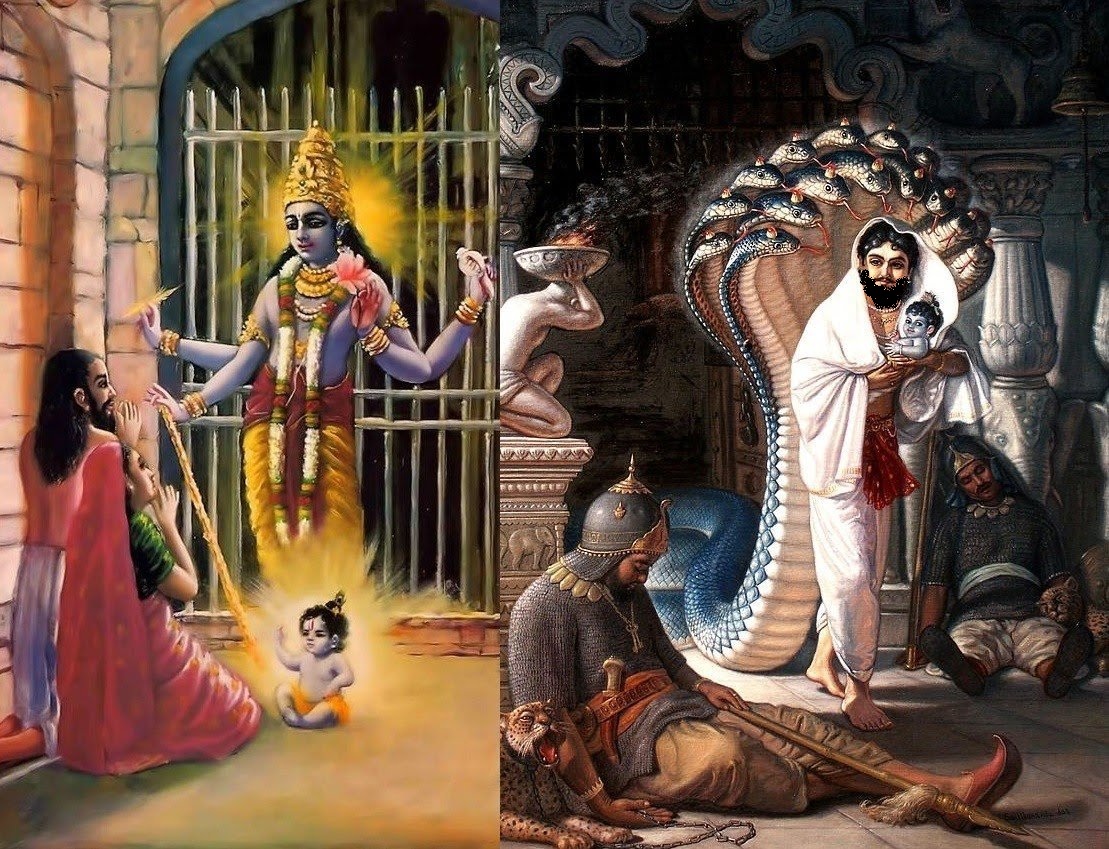
Janmashtami
From the stealer of butter (makhanchor) to the preacher of Bhagwad Gita, every image of Lord Krishna is captivating for His devotees. Janmashtami is celebrated to commemorate this powerful incarnation of Lord Vishnu. Born in Mathura in the Dwapar yuga, in an era of chaos when evil was prevalent and persecution rampant, the objective of His birth was to save earth from tyrants. As Krishna Himself said- whenever there is deterioration of Dharma in the world, I will incarnate as its savior.
The birth of Lord Krishna is one of the most loved legends of all times. Sri Krishna was born in prison as Kansa, the evil king of Mathura, had imprisoned His parents Devaki (Kansa’s sister) and Vasudev because according to a heavenly forecast Kansa was destined to be killed by their eighth son. So, he killed all their children as soon as they were born. Death in the form of Kansa was waiting for Krishna even before He was born.
Krishna was born in the dark stormy night of the eighth day of Krishnapaksh of Bhadrapad. Helped by Krishna’s divine powers Vasudev managed to sneak out of the prison, cross the flooded Yamuna river amidst heavy rainfall and place his child safely in Gokul in his friend Nand’s house. Hence, Krishna grew up in Gokul with his foster parents Nand and Yashoda. As Krishna performed miraculous feats growing up, people of Nand-gaon realized His divinity and started celebrating His birthday. Gradually, the festivities engulfed the Mathura region and later on the whole Aryavart. Today, even after thousands of years the birth of this most loved God is celebrated in India and abroad.
The actual celebration of Janmashtami takes place at midnight when Krishna was born - statue of infant Krishna is bathed and placed in a cradle which is rocked amidst the blowing of conch and ringing of bells. Kids dress up as little Krishna, markets line up with sweet shops and elegant handis (pots). Temples and worship areas in households are elaborately decorated. Raslilas and religious plays are performed to recreate incidents from the life of Krishna. ‘Dahi- handi’ is observed the next day which celebrates God’s playful and mischievous side where butter stealing activity of Krishna is enacted, especially in Maharashtra.
Mathura and Vrindavan where Krishna spent his formative years celebrate Janmashtami with an unmatched zeal and grandeur, beginning almost ten days earlier. Also, Nand Utsav is celebrated here next day in which devotees offer 56 food items referred to as ‘Chhappan Bhog’. The legend of ‘chhappan bhog’ is linked with the Govardhan hill episode- Once Vrindavan was inflicted with incessant rain due to the Indra’s wrath. Krishna directed all His people to Govardhan and lifted the hill on his little finger for seven days, thus sheltering everyone, and breaking Indra’s pride. After the rain subsided, people presented him 56 (chhappan) food items out of love and gratitude. Lord Krishna later moved to Dwarika in Gujrat where he reigned as Dwarikadheesh. So in Dwarika too devotees celebrate the festival with great fervor and zeal.
The night of Janmashtami is charged with spiritual energy. Hence, seekers are advised that after partaking in the birth ceremony and accepting Prasad, they must spend some time doing their sadhna. Name chanting is especially fruitful.
Here you can chant Acyutāsͅtͅakam !
JAI SRI KRISHNA
Author Ms Hema Trivedi is an ardent devotee of Sri Krishna.